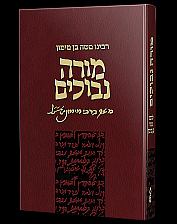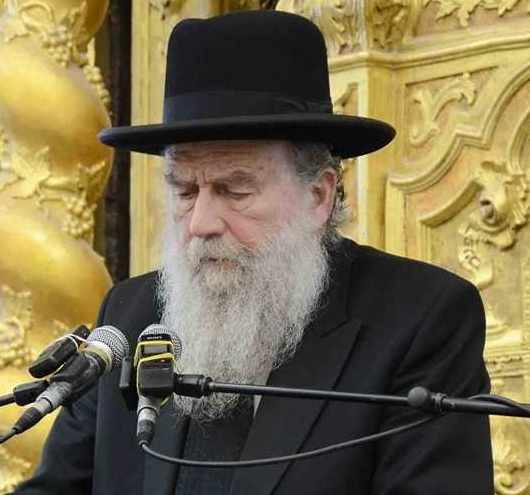  |
|
| |||||
This Google Custom Search looks only in this website. A Call and Request (from Gedolei Yisroel)
The Corona plague still hovers over the entire world, including many Jews throughout the globe who fell victim to it, while others became ill and require much Heavenly compassion.
It is known that during the Sefira, we customarily mourn the deaths of the talmidim of Rabbi Akiva who lacked respect for one another. The main thing [at this time] is to do whatever we can to rectify this blemish and shortcoming. Therefore, precisely during these days we must increase and augment [deeds] in matters between man and his fellow man.
The Hand of Hashem has struck us twice, with a terrible pandemic and a difficult decree, incomparable to anything in recent memory: a plague in which thousands ofour brethren fell, among whom were great Torah scholars and community leaders; and by being removed from Hashem's Presence by having shuls and batei medrash closed around the world. It is incumbent on us to better our ways and to repent to Hashem, every person and his community, as they recognize their own shortcomings. Specifically, we have to be mindful that the world operates in a measure-for-measure way; it is possible that these decrees came because we were not acting properly regarding the holiness of Shuls and batei medrash.
Stories about yielding and bein odom lechavero.
A peek into the diary of the Sabba of Slobodka reveals that most of his personal resolutions dealt with interpersonal relations: "Special effort to be careful regarding the respect due to my friends, altogether, patiently, and with a soft reply." Also, "To be careful as much as possible to avoid embarrassing anyone in public in the slightest way... Did [I] fulfill the words of Rabbenu Yonah who obligated a person to seek ways and measures to benefit his fellow man day by day?" is what he demanded of himself.
Notes from a shiur given on 24 Shvat, 5765. HaRav Shapira zt"l explains what it means to see the kolos of Sinai, as it says in the Torah. This shiur explains many of the basic concepts and events that took place at Ma'amad Har Sinai, which the Rambam says includes sisrei Torah.
At the end of Sefer Hamitzvos of the Rambam, the Ramban adds the mitzvos that, according to him, the Rambam forgot. The second of these is that we were forbidden to forget the maamad Har Sinai, and must not take it out of our consciousness and it should be before our eyes all the time. Heshomer lecho ushemor nafshecho me'od pen tiskach es hadevorim asher ro'u einecho . . .
The Ramban says that this is a prohibition, an issur. We may not forget. It is not that we have been commanded to do things to recall and refresh the memory of the maamad Har Sinai, but that we have been forbidden to forget it. We must not worsen the current situation. This is the nature of a lo sa'aseh: not to worsen the situation as it exists. It assumes that we have a situation in which this is a constant presence in our life, and we must preserve this.
We learn from the Ramban that our default situation is with ma'amad Har Sinai and we must not destroy this. We are there and, as the Ramban says, "We are forbidden from forgetting the ma'amad Har Sinai. We must not remove it from our consciousness. But our eyes and heart must be there all the time.
From Our Archives
Thank You for the Torah
by Mordecai Plaut
Thank you Hashem.
We thank you Hashem for Mattan Torah on that first Shavuos, for bringing us to the foot of Mount Sinai where we were truly one, "as one man with one heart." We are grateful for the unforgettable experience that day -- when the whole creation received the first two Commandments directly -- which all of us, who were immediately present in spirit, recall at least subliminally to this day and forever. Individually and as a nation we met our Maker in this world and received from Him the wisdom that accompanies us through the ages until the final Redemption and beyond.
The Seven Days Of Shavuos: Understanding Isru Chag and Yemei Tashlumin
by Rabbi Daniel Yaakov Travis
Aliyah Leregel
In the times of the Beis Hamikdosh the entire Jewish nation would journey to Yerushalayim to celebrate yom tov in the Beis Hamikdosh. Now one can only try and visualize this extraordinary scenario, and wonder how so many people could possibly be contained within the walls of one building. Our Sages add to our amazement when they revealed to us that despite the vast multitude, there was plenty of space for each one to bow down comfortably (Mishnah Ovos 5,7). In physical terms this is completely inconceivable, for bending down takes up more room then standing upright.
The Beis Hamikdosh existed outside of normal world parameters. One of many miracles which took place there on a regular basis was that there was no concept of space within its walls. Therefore although most of Klal Yisrael were there during the three Regolim, everyone could bow down with plenty of room. In order that this miracle should be appreciated and have its maximum impact, Hashem temporarily suspended it and thus while people were standing up it was crowded. At the instant that people prostrated themselves to Hashem, the Mikdosh reverted to its status of not having space. In this way people truly felt the miraculous nature of their surroundings, and reached an even higher level of inspiration at this crucial moment of their Divine Service (Responsa Chasam Sofer).
EARLIER EDITORIALS
A Mission to Spread
Daas Torah
Looking for the
Best in Yiddishkeit
The Immorality
of Palestinian Combatants and Noncombatants
|
|||||




.jpg)



